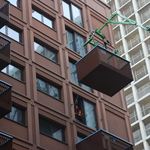kingkam
New Member
This is just a general comment and I'll post in other threads too as some of these comments are not relevant here...and I just want to vent.
The passenger rail service is dying in Canada.There is just too many significant flaws with the way we run our systems.The pandemic is going to amplify this even more. Especially with GO/VIA service.
We need High Speed Electrified Rail linking major business centers together like Kitchener, London, Windsor, Hamilton, Kingston, Ottawa and MTL.(will never happen just be talked about for the next 15-20 years)
We need to offer price points that actually make sense for people to ditch their car and take rail service to places like above
We need a mid town corridor running through the GTA parallel to the 407 or 401
We need to significantly reduce the travel time linking the above cities by at least half.
As an example I would love to take the train from let's say Whitby to Burlington/Oakville but that takes 2+ hours by GO. Or I would love to take the train from Union to Niagara but that's another 2 hours again. So we need passenger trains that can travel 200 + KM/H that don't get delayed by freight or ROW's. This makes me just want to use my vehicle even if it means it's more taxing on my body.
We have an opportunity to significantly invest in our economy right now and we should take advantage in the post pandemic world. Having high speed trains opens up where people can live/work/play and links our province together. I know it will never happen but one can dream. The passenger rail service will take years to recover unless we invest and actually make it a faster/cheaper viable option within our option to use.
Someone smarter than me prove me wrong or am I correct?
The passenger rail service is dying in Canada.There is just too many significant flaws with the way we run our systems.The pandemic is going to amplify this even more. Especially with GO/VIA service.
We need High Speed Electrified Rail linking major business centers together like Kitchener, London, Windsor, Hamilton, Kingston, Ottawa and MTL.(will never happen just be talked about for the next 15-20 years)
We need to offer price points that actually make sense for people to ditch their car and take rail service to places like above
We need a mid town corridor running through the GTA parallel to the 407 or 401
We need to significantly reduce the travel time linking the above cities by at least half.
As an example I would love to take the train from let's say Whitby to Burlington/Oakville but that takes 2+ hours by GO. Or I would love to take the train from Union to Niagara but that's another 2 hours again. So we need passenger trains that can travel 200 + KM/H that don't get delayed by freight or ROW's. This makes me just want to use my vehicle even if it means it's more taxing on my body.
We have an opportunity to significantly invest in our economy right now and we should take advantage in the post pandemic world. Having high speed trains opens up where people can live/work/play and links our province together. I know it will never happen but one can dream. The passenger rail service will take years to recover unless we invest and actually make it a faster/cheaper viable option within our option to use.
Someone smarter than me prove me wrong or am I correct?




